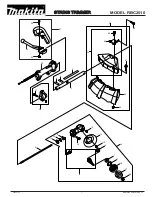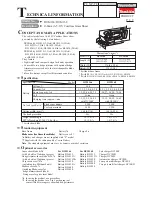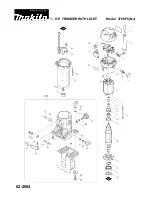
Disassembly
5-2
Revision 2 - 26 April, 2000
HP SERIES DIMMER
TECHNICAL MANUAL
The internal heatsink temperature is constantly monitored by the dimmer. If the heatsink
temperature rises above 85ºC, the dimmer will automatically shut down the output drive
and display the message: “OVER TEMPERATURE XX
O
C”. The dimmer will display
this message until the temperature drops below 80ºC, at which time it will restart. The
fan will continue to cool the heatsink during the shut down period.
The electronic shutdown at 85
°
C is backed up by a 90
°
C buried cutout, which shuts
down power to all electronics other than the cooling fan.
Note that the HP6-C / HP12-SC's two fans will run slower and quieter under average
operating conditions than the HP12-TR's single fan, due to the increased airflow
capacity. In addition the fans in wall-mount dimmers will run slower and quieter than the
fans in rack-mount dimmers due to increased natural convective cooling.
5.1.3
Supply Power fault protection
The HP series dimmers will detect voltage problems generated by phase load imbalance
and a poor or missing neutral connection. A poor (resistive) neutral connection can cause
arcing and overheating of the connector, and also allows the phase-to-neutral voltages to
vary, causing overvoltage damage to components.
Bad neutral connections account for many lamp and dimmer failures. While the internal
electronics of HP dimmers can tolerate (and correct for) these fault conditions, other
equipment run from the same mains supply generally cannot.
The HP series dimmers will detect two types of mains supply problems:
•
Mains undervoltages
•
Higher than normal neutral-earth voltages
In addition, the HP series dimmers can correct and regulate the dimmed outputs against
variations in the mains supply voltages.
The HP dimmers’ electronic circuits will tolerate gross overvoltages and accidentally
transposed active-neutral connection with no internal damage and no damage to output
loads.
5.1.3.1
Mains Undervoltage
If voltage on any phase drops below the minimum (approximately 100 volts AC) for
more than 2 cycles
the outputs on that phase are disabled until the voltage rises above a preset
level
. When the undervoltage condition is removed, the dimmer will reactivate the low
phase. The outputs will restart according to the previous settings.
5.1.3.2
Neutral - Earth Voltage
If the voltage between the neutral and earth exceeds the maximum, the dimmer outputs
are turned OFF and the following message scrolls across the display: “NEUTRAL
EARTH FAULT. PRESS NORMAL TO REACTIVATE”. When the neutral-earth
voltage condition is removed, press the NORMAL button to reactivate the dimmer. The
outputs will restart according to the previous settings.
Neutral-earth voltages are most commonly caused by poor (resistive) neutral
connections, undersized neutral wires in supply cables, and missing or disconnected
earths. Screw terminals in connectors can loosen with use and these should be checked
when this fault occurs.
The neutral detect facility may be disabled via the MODE menu. Refer to section 4.1.4.5
for details.
Summary of Contents for HP6
Page 10: ...SELECT SELECT TR 1 7 6 2 5 3 4 8 9 11 10 Figure 2 1...
Page 35: ...Fault Diagnosis 4 5 Revision 2 26 April 2000 HP SERIES DIMMER TECHNICAL MANUAL BLANK PAGE...
Page 39: ...Fault Diagnosis 4 8 Revision 2 26 April 2000 HP SERIES DIMMER TECHNICAL MANUAL BLANK PAGE...
Page 47: ...Fault Diagnosis 4 13 Revision 2 26 April 2000 HP SERIES DIMMER TECHNICAL MANUAL BLANK PAGE...
Page 78: ......
Page 81: ......
Page 82: ......
Page 84: ......
Page 86: ......
Page 88: ......
Page 90: ......
Page 92: ......
Page 94: ......
Page 96: ......
















































